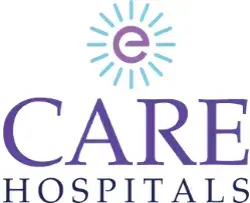-
Doctors
-
Specialities & Treatments
Centre of Excellence
Specialties
Treatments and Procedures
Hospitals & Directions HyderabadCARE Hospitals, Banjara Hills CARE Outpatient Centre, Banjara Hills CARE Hospitals, HITEC City CARE Hospitals, Nampally Gurunanak CARE Hospitals, Musheerabad CARE Hospitals Outpatient Centre, HITEC City CARE Hospitals, Malakpet
HyderabadCARE Hospitals, Banjara Hills CARE Outpatient Centre, Banjara Hills CARE Hospitals, HITEC City CARE Hospitals, Nampally Gurunanak CARE Hospitals, Musheerabad CARE Hospitals Outpatient Centre, HITEC City CARE Hospitals, Malakpet Raipur
Raipur
 Bhubaneswar
Bhubaneswar Visakhapatnam
Visakhapatnam
 Nagpur
Nagpur
 Indore
Indore
 Chh. Sambhajinagar
Chh. SambhajinagarClinics & Medical Centers
Book an AppointmentContact Us
Online Lab Reports
Book an Appointment
Consult Super-Specialist Doctors at CARE Hospitals

Robot-Assisted Ventral Hernia Surgery
- Advanced Technology
- Shorter Hospital Stay
- Pre & Post-Operative Care
- All Insurance Accepted

Chat With Our Experts
Get second opinion on Whatsapp
25 lakhs+
Happy Patients
Experienced and
skilled surgeons
17
Health Care Facilities
Top most Referral Centre
for Complex Surgeries
Robotic Ventral Hernia Surgery
More than a million ventral hernias require surgical repair each year, making robotic ventral hernia surgery an increasingly vital medical advancement. These hernias develop in the abdominal wall along the midline (ventral surface). Compared to traditional open surgery, robotic ventral hernia surgery offers significant advantages through its advanced three-dimensional imaging capabilities of the abdomen.
This complete guide explores everything patients need to know about robotic ventral hernia surgery, from preparation requirements and surgical techniques to recovery expectations and potential complications.
Why CARE Group Hospitals is Your Top Choice for Robotic Ventral Hernia Surgery in Hyderabad
CARE Hospitals stands at the forefront of robotic ventral hernia surgery in Hyderabad, offering patients access to groundbreaking surgical technologies. What truly sets CARE Hospitals apart is their team of extensively trained and highly experienced surgeons specialising in robotic procedures. These experts are dedicated to providing top-tier surgical treatments across multiple specialties, including ventral hernia repairs. The surgeons manipulate robotic surgical instruments via a control panel while viewing the patient through a terminal, allowing for extraordinary precision during operations.
Additionally, CARE Hospitals offers affordable hernia treatment options with comprehensive coverage.
CARE Hospitals maintains a multidisciplinary approach for patients with co-morbidities, alongside 24/7 imaging, laboratory services, and blood bank facilities. Their adherence to international infection control practices further ensures patient safety throughout treatment.
Cutting-edge Surgical Innovations at CARE Hospitals
The evolution of hernia repair techniques has witnessed remarkable advancements at CARE Hospitals with the introduction of robot-assisted surgery platforms.
CARE Hospitals has embraced these innovations by integrating the cutting-edge Hugo and Da Vinci X Robotic systems. These platforms offer surgeons unprecedented advantages:
- Enhanced instrument flexibility with wrist-like tiny instruments at surgical arm tips
- High-definition 3D visualisation of the surgical area
- Greater precision and control through intuitive console interfaces
- Advanced surgical recording capabilities for improved training
Conditions for Robotic Ventral Hernia Surgery
Robotic ventral hernia surgery has become increasingly appropriate for several specific conditions. Among ventral hernias, two-thirds are primary ventral hernias, whereas one-third are incisional hernias that develop after previous surgeries. Incisional hernias tend to be more complex due to intra-abdominal adhesions, which require careful management to ensure a successful and complication-free surgical outcome.
Types of Robotic Ventral Hernia Surgery Procedures
- Robotic Intraperitoneal Onlay Mesh Approach: One of the earliest approaches is the robotic intraperitoneal onlay mesh (rIPOM) technique. This procedure involves affixing mesh to the anterior abdominal wall inside the abdominal cavity. However, concerns about mesh-to-viscera contact led to additional innovations in procedural techniques.
- Robotic Transabdominal Preperitoneal Technique: Surgeons developed the robotic transabdominal preperitoneal (rTAPP) approach to address these concerns. This method creates peritoneal flaps that allow preperitoneal mesh placement and closure of the peritoneal defect over the mesh. rTAPP proves particularly effective for various hernias and defect sizes, especially for:
- Primary hernias
- Smaller defect sizes
- "Out of midline" defects
- Defects in the cranial or caudal parts of the midline
- Robotic TransAbdominal RetroMuscular Repair: The robotic TransAbdominal RetroMuscular (TARM) repair utilises the retromuscular plane laterally and the preperitoneal plane in the midline. This technique works well for:
- Medium to large primary ventral hernias (<3 cm)
- All incisional hernias
- Hernias with concurrent large diastasis
- Multiple defects or "Swiss cheese" patterns
- As a backup when TAPP repair proves insufficient
- Robotic Extended-Totally-Extra-Peritoneal Technique: For more complex cases, the robotic Extended-Totally-Extra-Peritoneal (r-E-TEP) approach expands upon principles from inguinal hernia repair. Its key advantage lies in direct access to the retromuscular space without needing to incise the lateral edge of the ipsilateral posterior sheath.
- Robotic Transversus Abdominis Release Technique: The robotic Transversus Abdominis Release (RoboTAR) technique has revolutionised complex hernia repairs. Originally an open procedure, this approach enables the advancement of the posterior sheath for tension-free closure and allows large mesh overlap. RoboTAR works exceptionally well for medium or large incisional hernias requiring component separation.
Know the Procedure
The entire journey involves careful planning, precise execution, and proper aftercare to ensure optimal outcomes.
Pre-surgery Preparation
Patients scheduled for robotic ventral hernia surgery typically undergo several preparatory steps:
- Depending on age and medical condition, blood work, medical evaluation, chest X-ray, and an EKG might be required.
- Prior to surgery, the surgeon reviews potential risks and benefits, after which the patient provides written consent.
- Stopping medications like aspirin, blood thinners, anti-inflammatory drugs, and Vitamin E for several days before surgery
- Avoiding food and drink after midnight the night before surgery
Robotic Ventral Hernia Surgical Procedure
- The actual procedure begins with general anaesthesia to ensure patients feel no pain.
- Once asleep, the surgeon makes a few small incisions (usually three or four) in the abdomen.
- The surgeon inserts a laparoscope connected to a high-definition camera through one of these incisions, providing a detailed three-dimensional view of the surgical area.
- The abdomen is inflated with carbon dioxide gas to create working space. The surgeon then sits at a nearby console to control the surgical robot.
- The surgeon dissects and detaches the hernia sac from the edges of the fascial defect and closes the hole in the posterior layer of the peritoneum.
- The surgeon places the mesh and fits it to the size of the entire dissected area.
- After thorough inspection, the surgeon retracts the instruments from the incision and closes the incisions with the staples or sutures.
- Post-surgery Recovery
- Recovery time varies and depends on the complexity of the repair. Activity restrictions likewise differ, sometimes ranging from none to limitations for two to four weeks.
- Firstly, patients may experience mild to moderate discomfort, which is manageable with prescribed pain medication. The first bowel movement might occur anywhere from 1 to 5 days after surgery.
Risks and Complications
Common complications patients might experience include:
- Bleeding during or after surgery
- Pain during intimate activities
- Reactions to anaesthesia
- Fluid collection (seromas) or blood accumulation (hematomas)
- Injury to nearby organs or blood vessels
- Infection at incision sites
- Temporary bladder emptying difficulties
- Hernia recurrence
- Persistent pain beyond the usual recovery period
Benefits Of Robotic Ventral Hernia Surgery
The clinical benefits of robotic ventral hernia repair extend beyond conventional surgical techniques in several meaningful ways.
Robotic technology delivers detailed three-dimensional (3D) views of the abdominal cavity. This enhanced visibility creates a more precise picture for surgeons to reference during operations, ultimately improving precision.
Indeed, post-surgical outcomes reveal several concrete benefits:
- Shorter hospital stays
- Reduced blood loss
- Lower overall complication rates
- Quicker recovery
Insurance Assistance for Robotic Ventral Hernia Surgery
Health insurance typically provides comprehensive coverage for robotic ventral hernia surgery, including medical expenses, surgical costs, hospital stays, and pre/post-hospitalisation expenses.
Second Opinion for Robotic Ventral Hernia Surgery
In most cases, patients should consider a second opinion when:
- Facing a complex hernia requiring extensive repair
- Dealing with recurrent hernias after previous surgeries
- Having multiple treatment options to choose from
- Feeling uncertain about the recommended surgical approach
- Being classified as high-risk due to obesity or other conditions
Conclusion
Robotic ventral hernia surgery certainly represents a significant advancement in modern surgical care. The enhanced 3D visualisation, superior instrument control, and minimally invasive techniques have transformed hernia repair outcomes. CARE Hospitals stands at the forefront of this surgical evolution, offering patients access to cutting-edge robotic systems and experienced surgeons.
Frequently Asked Questions
Robotic ventral hernia surgery involves a surgeon using a computerised system to repair hernias through small incisions about the size of a fingertip.
The robotic system precisely translates surgeon movements while filtering natural hand tremors. Compared to open surgery, robotic approaches typically result in less post-operative discomfort, shorter hospital stays, and reduced bleeding.
Simple procedures may be completed in as little as 30 minutes, while complex reconstructions can take 8-10 hours.
The ideal sleeping position after hernia surgery is on your back with your upper body elevated at a 30-45 degree angle using pillows or an adjustable bed.
Every surgery carries potential complications. Specific risks with robotic hernia repair include:
- Bleeding during or after the procedure
- Reaction to anaesthesia
- Seromas or hematomas
- Injury to nearby tissues or organs
- Infection at incision sites
- Mesh-related issues (though rare)
- Hernia recurrence
Most patients experience a relatively quick recovery, typically taking 2-4 weeks.
Most patients experience minimal pain with robotic ventral hernia surgery. Many report only mild soreness rather than significant discomfort.
Ideal candidates for robotic ventral hernia repairs include patients with hernias that cause discomfort or affect quality of life. This approach works exceptionally well for both simple and complex cases.
Most patients can resume light physical activities within a few days after robotic ventral hernia surgery, while strenuous exercise & heavy lifting should be avoided for 4-6 weeks.
Proper nutrition helps your body heal after robotic ventral hernia surgery. Your diet should evolve as you recover, starting with clear liquids and gradually returning to normal eating.
- First 24 hours: Clear broths, water, apple juice, and tea
- First week: Pureed foods, yoghurt, pudding, and softened cereals
- Second week: High-fibre foods to prevent constipation
- Avoid spicy foods, red meats, chocolate, caffeine, and fried foods
Still Have a Question?

